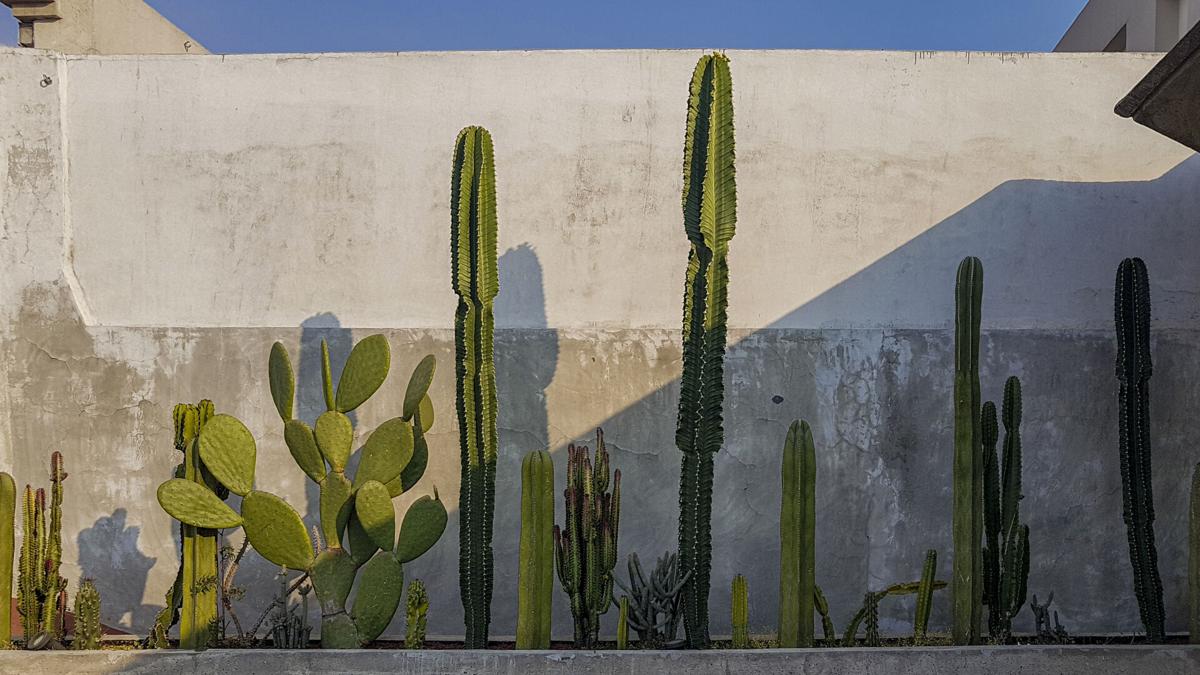Winter is a prime time for installing garden features in our area. The weather is cool and many of your plants may be dormant. If you’re planning to build walls, pave a patio, or build a deck, here are some tips to keep your existing plants safe from harm.
Remember to contact Arizona 811 before embarking on any project that requires digging. They will locate your utilities, like electrical, plumbing, and gas lines. It’s required by law, and a commonsense safety precaution.
Keep in mind that large trees are likely to cause damage to hardscaping by heaving up patios, cracking walls and foundations, or invading plumbing with their roots. For this reason, choose smaller trees (less than 30 feet tall at maturity) for patio areas or locations near your house.
1. Protect the root zone: Roots need to breathe, and they need water and appropriate temperatures to survive. Don’t dig or install paving around trees near the dripline. Don’t allow your contractors to drive over or pile up materials near plants’ root zones.
2. Don’t cover plants with plastic. Even in cold temperatures, plastic is likely to kill the foliage if it’s left on the plants for longer than a few hours. In hot weather, just don’t do it (ask me how I know). Use sheets if you must cover the plants, and take them off as soon as possible. The safest way to cover your plants is to drape the cloth over some stakes or a frame without the sheet or cloth touching the plant; that way the plant is not supporting the weight of the cloth.
3. Mark out all plants with bright-colored cones or flags or protect with fencing to prevent damage and trampling. Pointing out the plants to your contractor isn’t enough — they will get squished if the areas around them aren’t protected. Even if the plants themselves get lucky, you don’t want people walking over the root zone and causing soil compaction.
4. Fencing is often easier on existing vegetation than walls that require footers. Digging footers near trees and shrubs will damage the roots and potentially cause soil compaction even if the footer trenches aren’t near the plants. If you must have a wall with footers, fence or otherwise mark off areas where you don’t want spoil dirt piled up or machinery going through.
5. Choose hardscaping that allows for water penetration. Examples include brick, stone or concrete pavers installed with sand or soil in the joints; decomposed granite; and interlocking concrete blocks with vegetation. This will not only allow rainfall to percolate through the patio and sink into the soil for any nearby plants, but will also help prevent flooding or water runoff from your yard.
6. Don’t use plastic products or artificial mulches near your plants. These products cause the soil to heat up and prevent water from reaching your plants’ roots. Our intense sun will break the plastic down quickly, and then you will have microscopic plastic bits in your soil forever.
7. During the installation and after, watch for changes in drainage patterns. Pooling water under a native tree, for example, will potentially kill the tree. Many of our native plants need well-draining soil to survive, and will die if they are suddenly in an environment with wet soil. If you see a problem, bring it up with your contractor and see if you need additional drainage installed.





